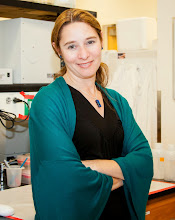 |
|
Image modified from www.clker.com
|
A good public talk about science should both inform and
entertain (in my opinion, any
scientific talk should do both!). At FameLab, with three
minutes and no PowerPoint crutch, contestants seek the right balance of
information and fun. The judging
criteria really hit this balance using the three C’s of science communication:
Content, Clarity, and Charisma. These C’s form the backbone for any good talk,
and we’ve looked at components of all of them before. Here, I want to remind readers that they all fit
together.
Content This
one’s obvious, right? We each have
a scientific message to share – the excitement of our latest findings on cell
division, whale song, or planetary geology. For many of us, I think the
challenge is to restrain ourselves from cramming too much content into our
talks. Whether we have 3 minutes
or an hour, each talk should have one core message, and the content should all
support that message. For my first
FameLab talk (video coming soon), I focused on plainfin midshipman fish and how
their whole reproductive system revolves around song. These fish sing a mean tune!
Clarity Even Nobel Prize-winning findings don’t
mean much if no one can understand them.
To get our message across, we need to be clear. This doesn’t mean “dumbing it down” for
a lay audience – I find that phrase insulting. This means structuring our talk in such a way that new
content follows old, and that we use language and comparisons appropriate for
our audience. In my research
on midshipman fish, I can either say that these fish show seasonal auditory
plasticity, or I can say that the female’s hearing changes during the breeding
season. Both points are correct, but which is easier to understand?
Charisma For most of us, this last C is the
hardest – we became scientists because we’re good in the lab, not because we’re
the life of the party. Charisma doesn’t have to mean handshakes and kissing
babies…we’re not running for office! Communicating our passion for science, and
doing it with a smile and some appropriate humor, goes a long way to making our
science accessible. In my
midshipman talk, I opened by singing “You’ve Lost that Lovin’ Feelin’” a la Tom Cruise, then
explaining that some fish also sing to attract the ladies. I don’t even sing in the shower (might
damage the plumbing!), but it captured my audience’s attention with a bit of
fun.
Prepare your next talk with the 3 C’s in mind and you’ll smoothly
sail the C’s of science communication.

No comments:
Post a Comment